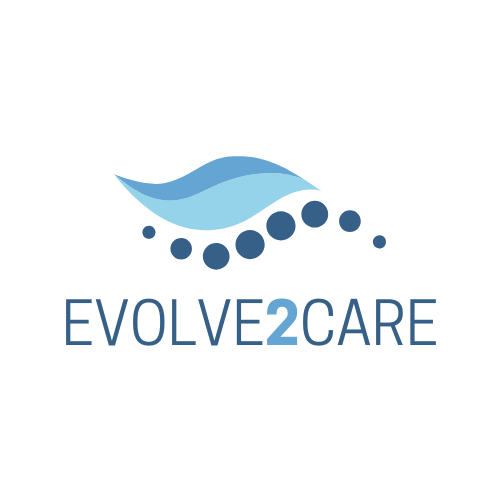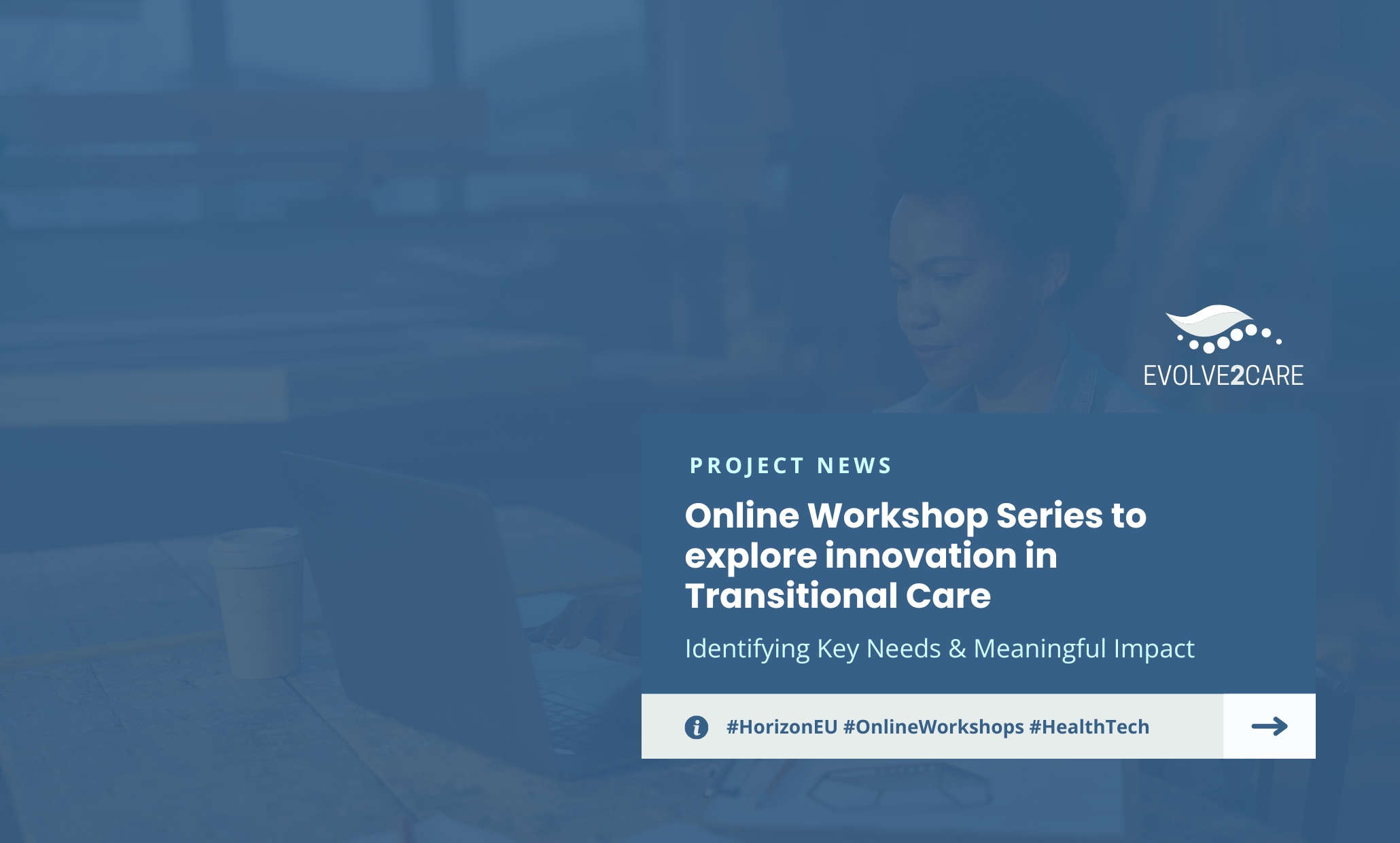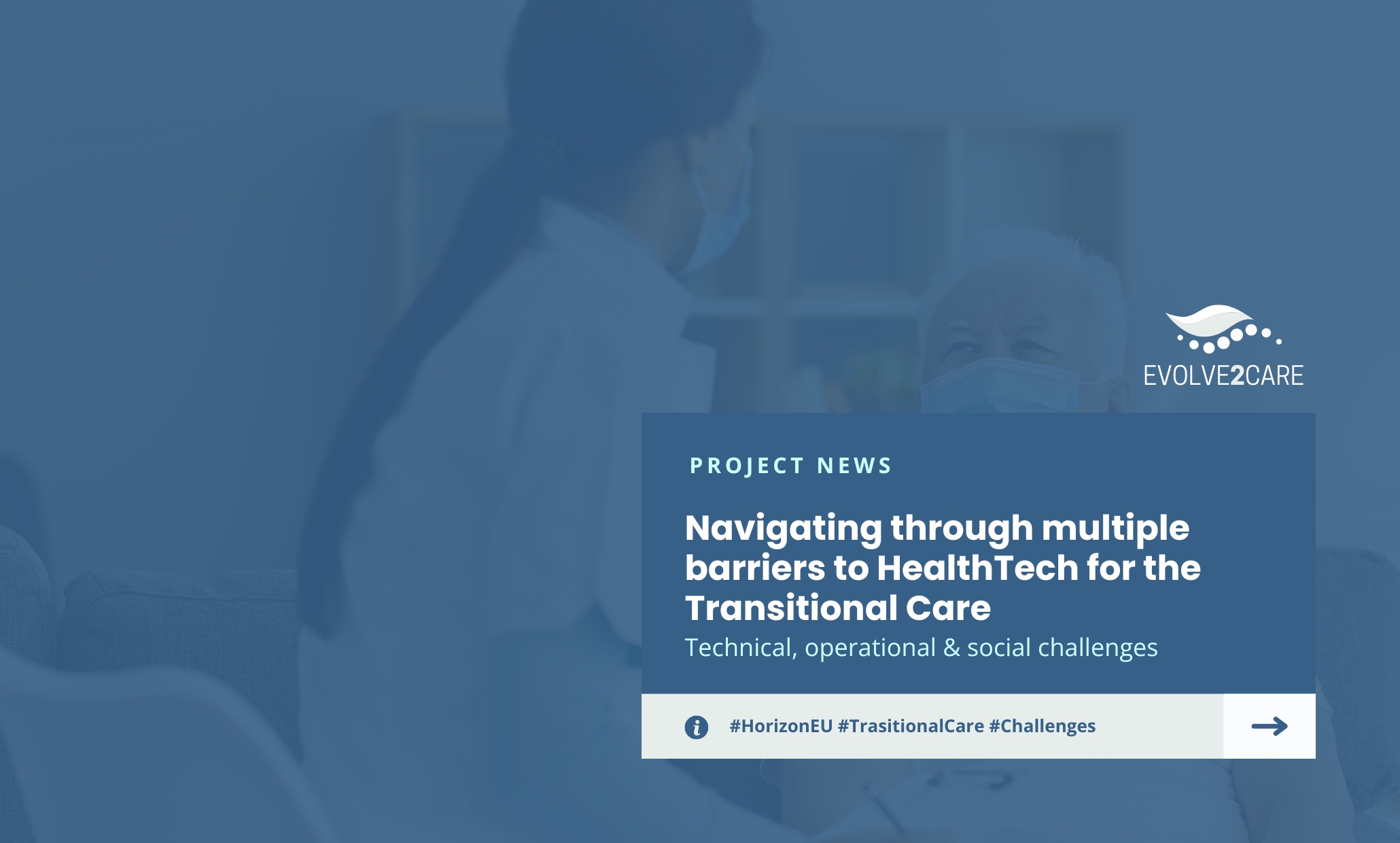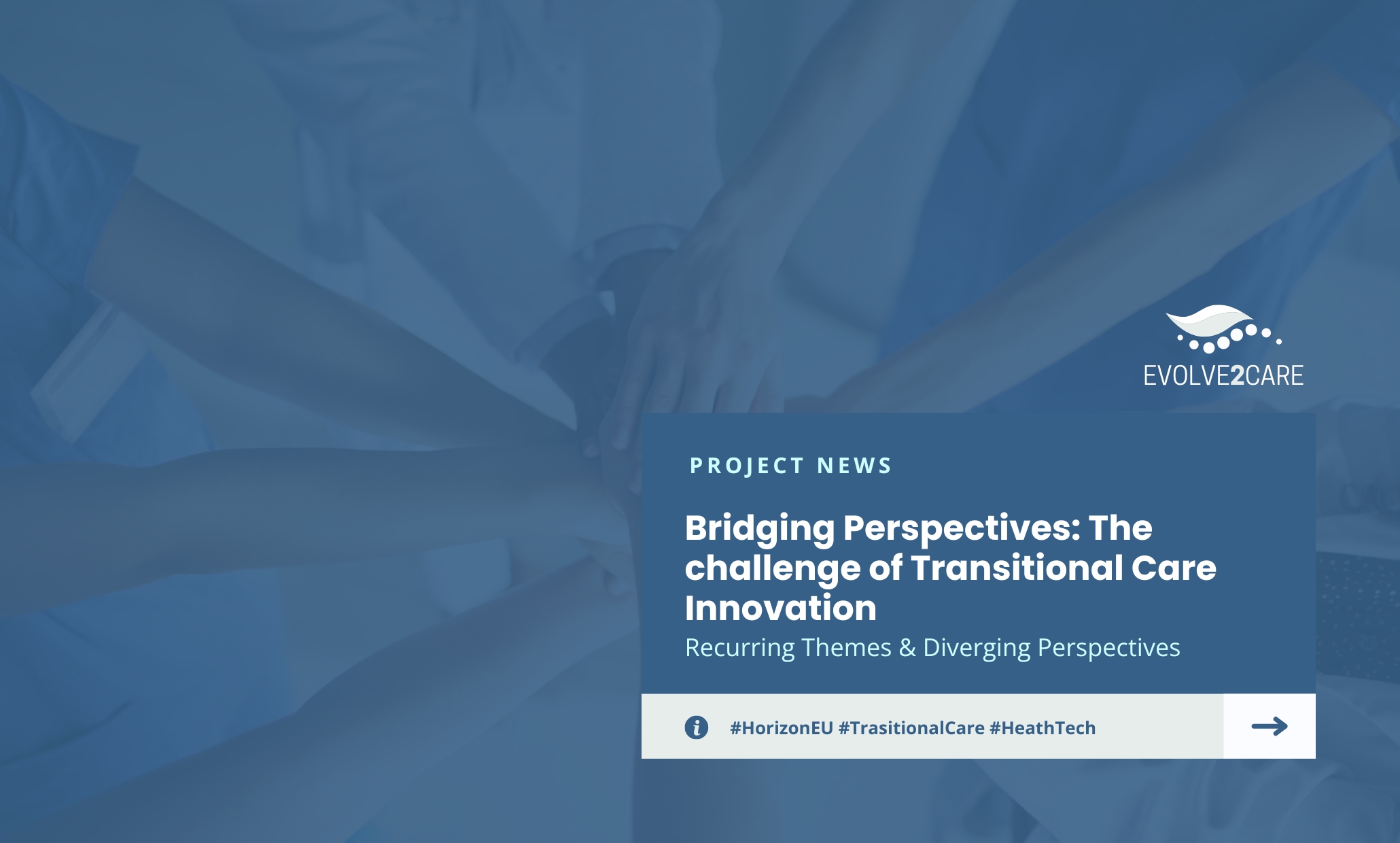Building on our ongoing efforts to analyse key drivers and barriers in transitional healthcare innovation, we are excited to launch the EVOLVE2CARE Online Workshop Series “Accelerating Innovation in Transitional Care – Identifying Key Needs & Meaningful Impact”!
Building upon the findings from Task 1.1, which identified more than 70 key drivers and barriers influencing innovation in transitional healthcare—spanning legal, regulatory, fiscal, technical, and operational factors—EVOLVE2CARE is now taking the next step with Task 1.2 that revolves around identifying the requirements of major stakeholders within the HealthTech and Transitional Care sector and building a framework of meaningful Key Performance indicators (KPIs) for the efficient and evidence-based integration of innovations for the benefit of transitional healthcare services delivery.
As part of this effort, the project is launching the online workshop series “Accelerating Innovation in Transitional Care – Identifying Key Needs & Meaningful Impact” featuring distinguished speakers, designed to engage healthcare providers, experts, innovators, and stakeholders in co-developing solutions that enhance patient care during transitions from hospital to home. The consolidated feedback from these workshops is going to feed into the preparation of the KPIs repository that will drive HealthTech solutions in Transitional Care.
Find out more about workshop series – Objectives, structure & participation
This workshop series aims to:
- Validate stakeholder needs through real-world discussions
- Refine Key Performance Indicators (KPIs)
- Explore strategies to enhance patient outcomes
- Engage healthcare professionals, innovators, and policymakers in meaningful dialogue
The workshops format
Each workshop will follow a structured approach.
- Brief introduction to the EVOLVE2CARE Project
- Keynote speech
- KPI and Needs brainstorming and D1.1 Findings & Needs n’ KPI Framework mini lecture
- Quiz Tool
- Summary & Closing Discussion
The schedule & topics
Workshop 1: Empowering Innovators to Transform Transitional Care
Description: This session will explore how Living Labs drive HealthTech innovation, presenting key findings on the factors influencing healthcare innovation from multiple perspectives. A proposed framework to accelerate innovation will be introduced, highlighting the role of real-world testing, co-creation, and collaboration in developing effective solutions.
Keynote Speaker: Teemu Santonen, Principal Lecturer, Laurea University of Applied Sciences
Date: 4 March 2025 | Time: 14:00 – 15:00 CET
Workshop 2: Aligning Innovation with Healthcare Stakeholder Needs
Description: How do healthcare providers and patients experience and influence innovation? This workshop will present research on the challenges of integrating new technologies into healthcare and explore issues like usability, trust, and accessibility. Participants will engage in discussions to refine a framework that ensures innovations meet the real-world needs of healthcare professionals and patients.
Keynote Speaker: Kostas Bakogiannis, Medical Doctor, Cardiologist
Date: 11 March 2025 | Time: 14:00 – 15:00 CET
Workshop 3: Breaking Barriers—Key Factors for Driving Innovation in Transitional Care
Description: HealthTech innovation is shaped by regulatory frameworks, stakeholder needs, and real-world challenges. This workshop will bring together Living Labs, patients, healthcare professionals, EU initiatives, legislators, innovators, and accelerators to examine these critical factors. Participants will engage in open discussions to refine an innovation framework and contribute insights that will help shape the future of healthcare innovation.
Keynote Speaker: Aikaterini Zisaki, Quality Assurance Management Systems & Regulatory Affairs Specialist
Date: 18 March 2025 | Time: 15:00 – 16:30 CET
By participating, you will contribute to real-world healthcare advancements, collaborate with stakeholders from across Europe, and help foster a new paradigm of collaboration and innovation in transitional care.



